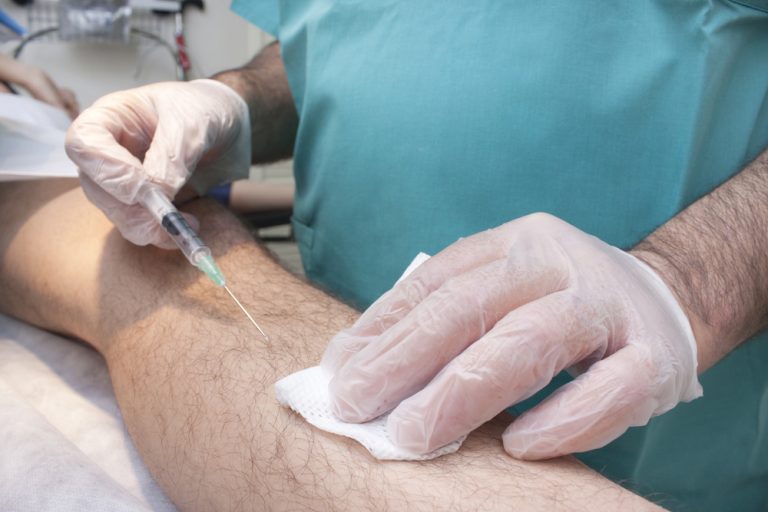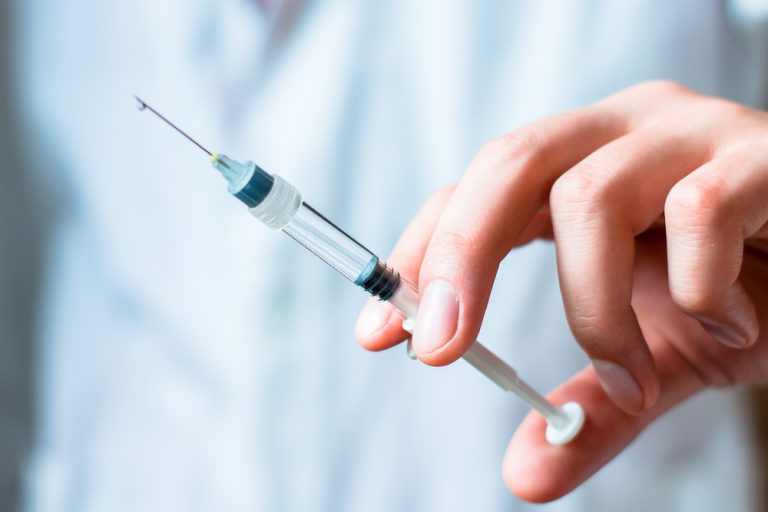What is Prolotherapy?
Prolotherapy is natural solution of medical grade glucose injected to heal damaged tissue. Its mode of action varies depending on the glucose concentration.
The Classic style usually 15% – 25% glucose, and acts via temporary inflammatory response that stimulates growth factors, and help regenerate damaged tissues, often ligaments, tendons and joint cartilage.
Perineural Injection Therapy developed by MD John Lyftogt is 5% glucose and works very differently. It’s thought to act at the pain caused by C fibres, and TRPV1 receptors. It can also be repair damaged, irritated nerves, improve normal nerve function and resolve chronic pain.
WHAT CONDITIONS CAN PROLOTHERAPY TREAT?
Prolotherapy can be used to treat a range of podiatric conditions, which includes:
- Osteoarthritis of knee, ankle, large toe and other foot joints
- Bunion pain
- Stubborn soft tissue injuries – heel pain, Achilles tendinopathy and plantar fasciitis, ligament damage and weakness (weak ankles), ankle pain, cuboid syndrome, runner’s knee, jumper’s knee and ITB syndrome
- Neural/nerve pain - Morton’s neuroma, nerve trauma after surgery, nerve entrapments and constriction, complex regional pain syndromes.
Additionally, it may be combined with other podiatric treatments, including other injection therapies, photobiomodulation, orthotics, footwear adjustments, paddings and exercise as necessary. In addition, nutritional supplements are often advised with Prolotherapy to encourage healing of the tissues.
Finally, read more about Prolotherapy treatment here and view this video about Lateral Ankle Prolotherapy.

At Cheltenham Podiatry, we use two forms of Prolotherapy:
Classical Hackett Prolotherapy:
A glucose 15-20% medical grade solution with an anaesthetic, is injected into the damaged tissue.
When introduced into a joint, ligament or tendon, it will irritate a temporary inflammatory response. this in turn, leads to a release growth factors, that can reduce pain, inflammation and encourage healing.
Furthermore, it can be used in strengthening damaged ligaments (eg ankle sprains), osteoarthritis, aid in repairing damaged tendons and treating osteoarthritic joints.
In conclusion, fortnightly injections are generally needed, usually for a course of 4-9 sessions.
Lyftogt’s Perineural Prolotherapy :
Also known as Perineural Injection Therapy (PIT), this innovative advancement in regenerative medicine is able to reduce pain almost immediately. This is achieved by intervening in the inflammatory process and restoring normal nerve function. Commonly used for chronic nerve pain syndromes, nerve entrapments, complex regional pain syndromes. In addition, as nerves feed all our tissues, therefore it can also be used to treat chronic musculoskeletal conditions, such as Achilles tendinopathy- both insertional and mid portion.
A drug free 5% medical grade dextrose solution is injected just under the skin with a small fine needle and no anaesthetic is required. It is thought to act on the pain caused by c fibres, and the TRPV 1 receptors .
In addition, between 3-8 sessions are usually needed , although in some cases 1-3 sessions may be sufficient. Additionally, an immediate reduction in pain after the first injection is experienced by most patients, with it lasting anywhere from hours to days. With every session, pain relief accumulates until it becomes permanent.
In conclusion, pain is generally reduced by 20-40% with each subsequent treatment and continues to diminish until pain free, as the tissue progressively heals.
The 5% dextrose can also be used on damaged deep nerves via ultrasound guided hydrodissection for faster and efficient nerve pain resolve and healing. More recent studies have shown resolve on conditions as carpel tunnel.
Furthermore, Related research papers:
- Ju Ann Thor, Nor Hanim Mohamed Hanapi, Hazwani Halil, Anwar Suhaimi, Perineural Injection Therapy in the Management of Complex Regional Pain Syndrome: A Sweet Solution to Pain, Pain Medicine, Volume 18, Issue 10, October 2017, Pages 2041–2045, https://doi.org/10.1093/pm/pnx063
- Lam KHS, Wu Y-T, Reeves KD, Galluccio F, Allam AE-S, Peng PWH. Ultrasound-Guided Interventions for Carpal Tunnel Syndrome: A Systematic Review and Meta-Analyses. Diagnostics. 2023; 13(6):1138. https://doi.org/10.3390/diagnostics13061138
- Rabago D, Zgierska A, Fortney L, et al. Hypertonic dextrose injections (prolotherapy) for knee osteoarthritis: results of a single-arm uncontrolled study with 1-year follow-up. J Altern Complement Med. 2012;18(4):408-414. doi:10.1089/acm.2011.0030
- Wu Y-T, Chen Y-P, Lam KHS, Reeves KD, Lin J-A, Kuo C-Y. Mechanism of Glucose Water as a Neural Injection: A Perspective on Neuroinflammation. Life. 2022; 12(6):832. https://doi.org/10.3390/life12060832
Book an appointment
SPEAK TO A PODIATRIST
Our friendly and professional podiatrists are fully trained and have years of over 10 yrs experience in prolotherapy. Therefore ensuring that you receive the best quality treatment and advice.
Finally, to find out if prolotherapy treatment is right for you, book an appointment at Cheltenham Podiatry today. Or you can call our team on 03 9583 3093. Alternatively, you can contact us using the contact form below.

FAQ
How do you prepare for prolotherapy?
It’s important to eat well before prolotherapy. If your appointment is early in the day, have a good-sized breakfast and include some protein, if possible. If your appointment is in the afternoon, have breakfast and lunch.
It is also advisable to stop taking anti-inflammatory medications a few days before prolotherapy because they can interfere with the procedure’s effectiveness.
Who performs prolotherapy?
The procedure will be performed by a physician specifically trained in prolotherapy so that you can be at ease throughout the entire process.
How often can you have prolotherapy?
Generally, patients will have several treatments over intervals of four to six weeks. The amount of treatments you will need depends on a variety of factors, but in most cases, three to six treatments is enough.
What should you not do after prolotherapy?
Do not take any anti-inflammatory medications after prolotherapy, as this will decrease the treatment’s effectiveness. Light exercise will generally be fine after a few days, but it’s important to listen to your body. If you are in significant pain, don’t continue the exercise.
Book an appointment today
Latest News
Ankle Arthritis
Understanding Ankle Arthritis and Regenerative Treatment Options in Podiatry Ankle[…]




